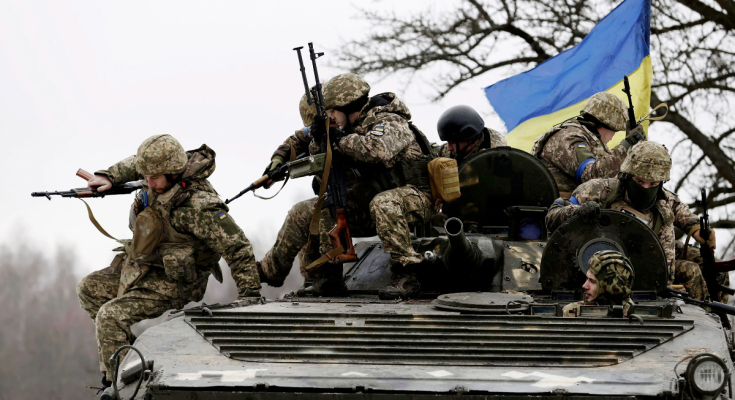
Ukraine’s Surprise Offensive: What it Means for the War Ahead
On August 6th, the Ukrainian military entered Russia in force with approximately 1,000 troops. The risky crossing of the Russo-Ukrainian border became the first invasion of Russian land since World War II. This incursion was planned entirely in secret, with Kyiv strategically relocating battalions from the frontlines in the east, towards the concealing foliage of northern Ukraine. In mid-July, Russian military intelligence observed these troop movements, but were ordered not to raise alarm.
Armed with Western weaponry, from American HIMARS launchers to Polish PT-91 tanks, the Ukrainians quickly overran the Russian defenses, which were manned by conscripts with minimal training or experience. Little stood in the way of Ukraine’s movement further into the Kursk region. As word reached the Kremlin, it became a scramble to move in domestic units to slow and halt the Ukrainian advance.
By President Zelenskyy’s admission, the Ukrainian incursion has slowed after meeting firmer resistance. A state of reinforcement of the captured territory has taken hold.
However, there is a remaining development that could result in a final defeat for Russia in this initial push. As of writing, the only three bridges crossing the river Seym have been damaged or destroyed. This river extends east out of Ukraine’s northern border and passes through Kursk. Without full functionality of these bridges, remaining Russian forces are trapped south of the river, wedged between the advancing Ukrainian military from the east and the Ukrainian border, leading to a potentially devastating encirclement.
The President of Russia, Vladimir Putin, visited the Kursk region after the front had mostly stabilized. To the people affected by the invasion, which he refers to as a “situation,” he offered 15,000 rubles (approx. $163) to the fleeing people of Kursk, of which there are nearly 200,000. Over 90 Russian settlements are claimed to have been captured by Ukraine, along with hundreds Russian soldiers.
In an apparent retaliatory strike, Russia has sent multiple waves of drones and missiles targeting Ukrainian cities. The wave on Monday the 26th has been labeled as one of the largest strikes of the war. From an analysis of where the strikes occurred, it appears the Russians were focused on Ukraine’s power grids, which caused blackouts in Kyiv and other affected cities.
Analysis
This invasion shocked nearly every major player in this conflict. Even the United States, whose intelligence agencies have closely collaborated with the Ukrainian military, expressed surprise. This astonishment comes with praise and apprehension by Western governments. While impressed by the dramatically improved capabilities of Ukrainian mechanized units, trepidation about whether this strategy will ultimately succeed arises.
Defending their actions, the Ukrainians claim they can hold this land for the purpose of having a bargaining chip when the Russians come to the negotiating table, and to aid the overall war effort by redirecting Russian battalions. Kyiv also notes that, even as Western equipment was used for an invasion of Russian soil, a ‘redline’ set by the Kremlin, the promised harsh response has not yet occurred.
Zelenskyy has seized upon the lack of a Russian reaction as a sign for Western forces to drop their restrictions on Ukrainian use of their weapons on Russian land. While it is still early to say, these results could convince Western militaries to allow for more aggressive strategies regarding their weapons usage against Russian targets.
Another goal, which has not been explicitly stated by Kyiv, is the disruption of the normalcy for the Russian people. Residents of Kursk flee in shock and fear, with many who once supported the war finding it difficult to maintain their hawkish rationale. However, if Ukraine wants to succeed in this gambit of striking the hearts of the Russian people, another operation with similar shock value must take place soon, lest the Russian propaganda machine quickly erase memories about their recent losses.
These short-term gains, however, may be coming at a steeper cost than expected. A redirection of Russian troops has occurred, but danger still looms in the Ukrainian east. The outskirt towns of a vital transport hub, the eastern city of Pokrovsk, are under heavy Russian attack. These attacks have not let up, even after the Kursk offensive. Telegraphing Russia’s resolve to take the strategically important city. If the gains of the Ukrainian military in its northern offensive are reversed, and this major city falls, it would be a massive dent in the confidence of both Kyiv and its Western allies. For now, every nation holds their breath to see who the victor of this bold invasion will be.



